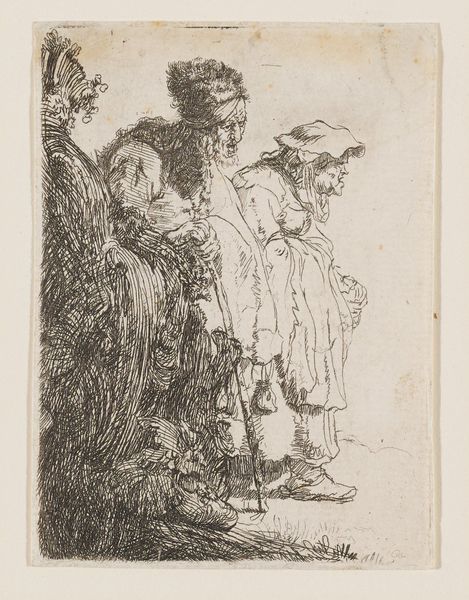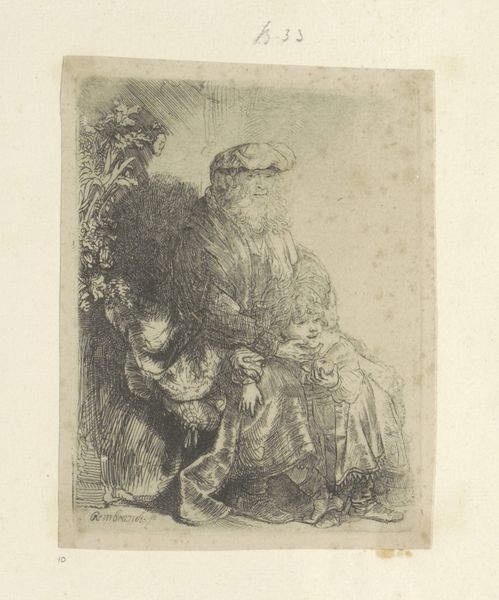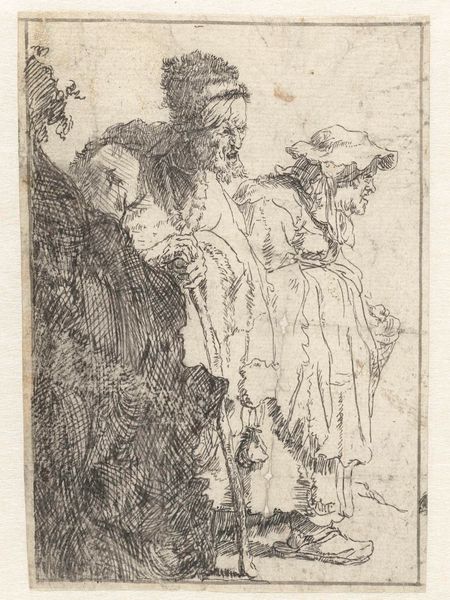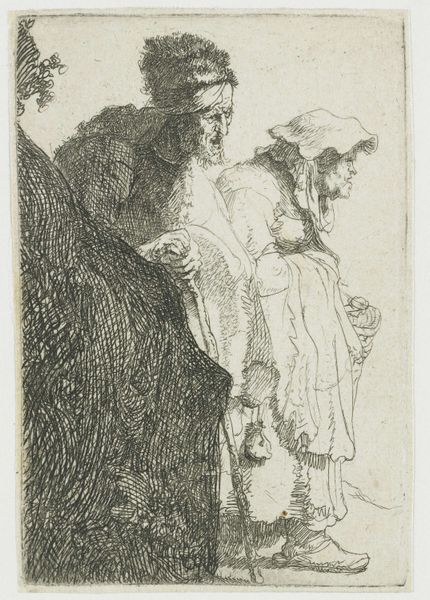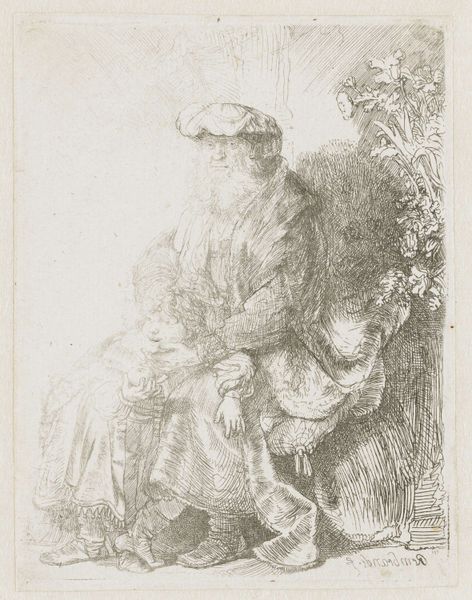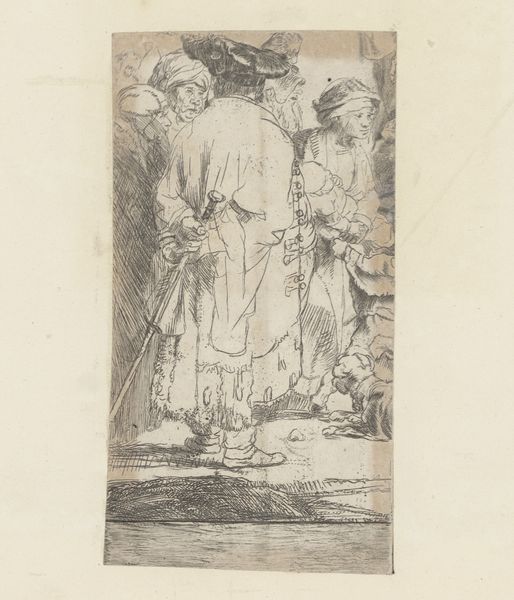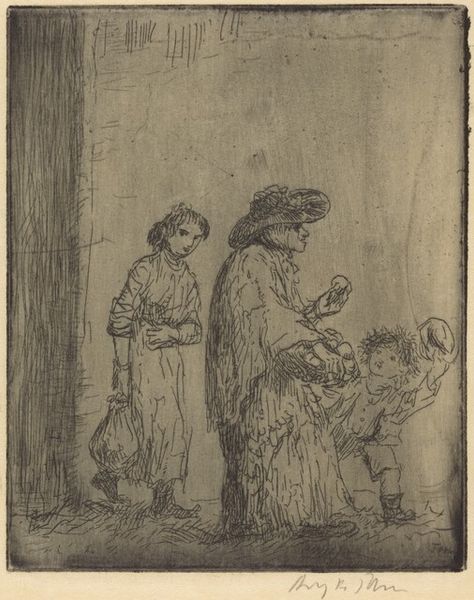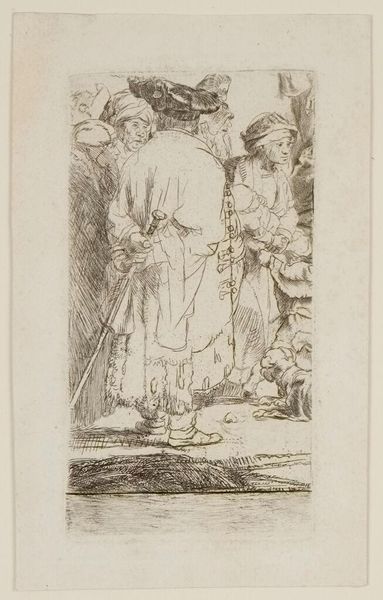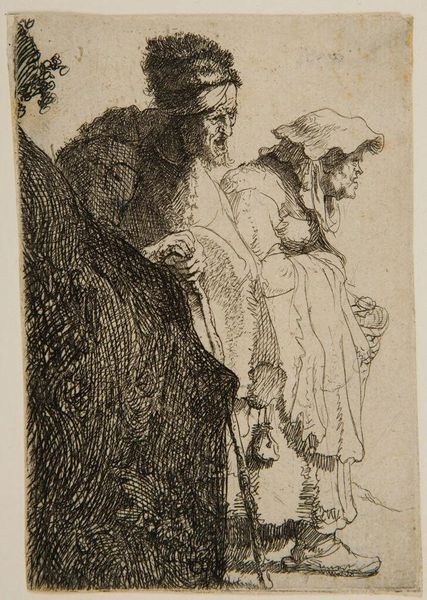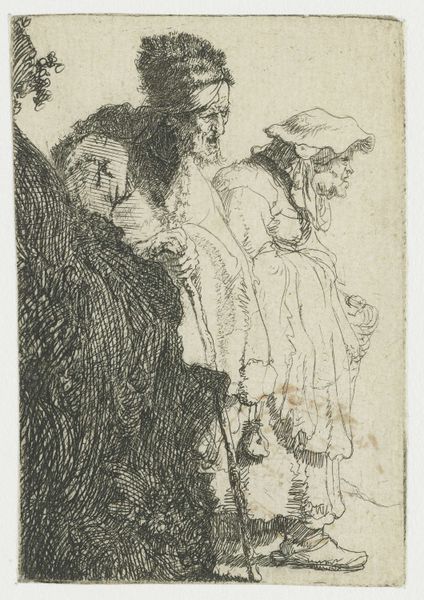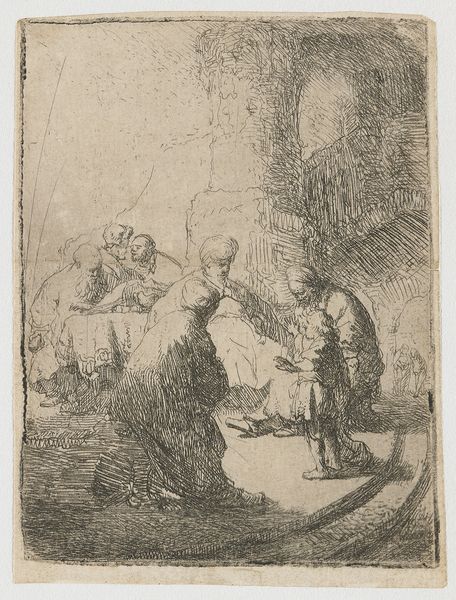
etching
#
portrait
#
narrative-art
#
dutch-golden-age
#
etching
#
figuration
#
genre-painting
Dimensions: height 116 mm, width 84 mm
Copyright: Rijks Museum: Open Domain
This print, made by Rembrandt van Rijn, depicts a beggar man and woman behind a bank. It’s made using etching, a printmaking technique where lines are incised into a metal plate using acid. Rembrandt was a master of the etched line, varying its thickness and density to create a rich tonal range. Look closely, and you’ll see how he uses a dense thicket of lines to describe the rough texture of the tree and the worn clothing of the figures. Notice, too, the open, airy quality of the background, achieved by using very few lines. Etching allowed Rembrandt to explore themes of poverty and marginality in Dutch society. The starkness of the medium, and the labor-intensive process, mirror the harsh realities of life for the figures he depicts. The contrast between the detailed foreground and the sparse background emphasizes their isolation and vulnerability. By attending to the materials and methods of production, we can appreciate how Rembrandt’s artistic choices amplify the social commentary embedded in his work.
Comments
No comments
Be the first to comment and join the conversation on the ultimate creative platform.
